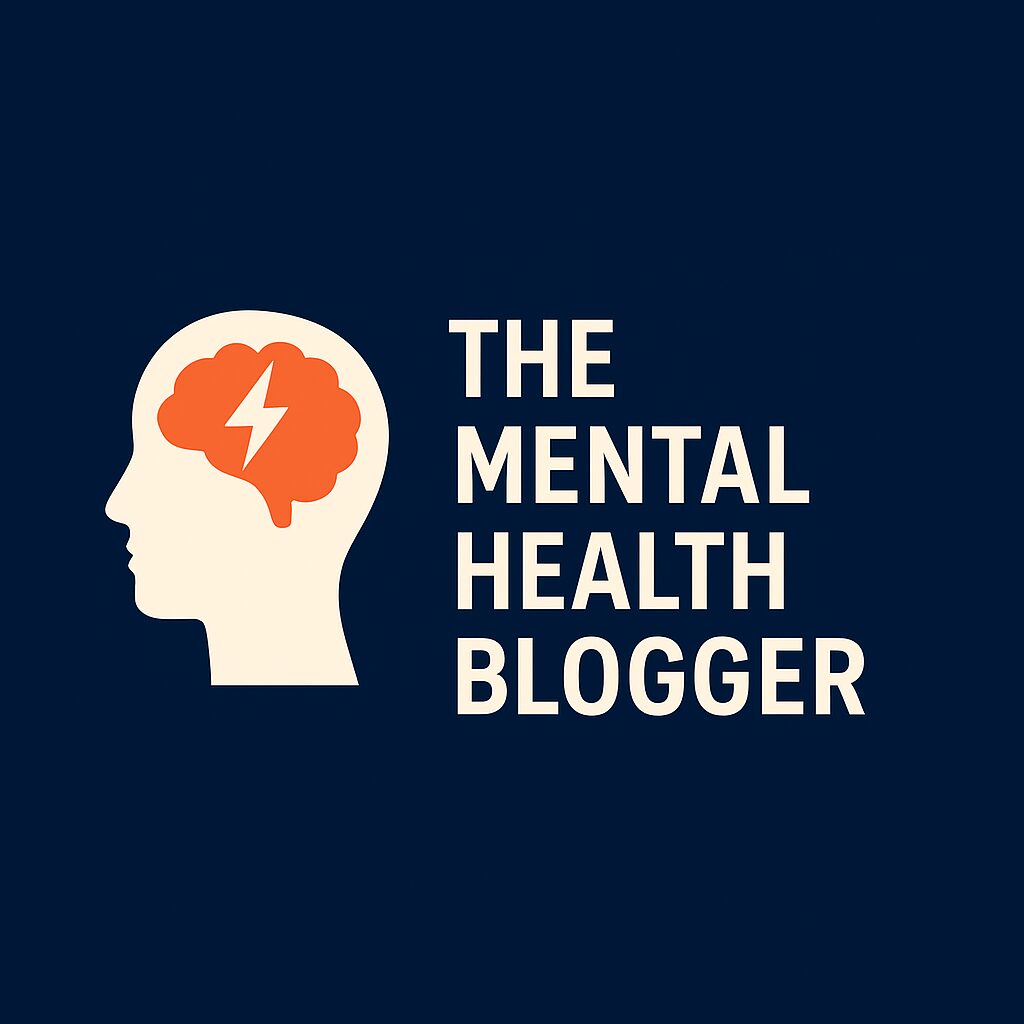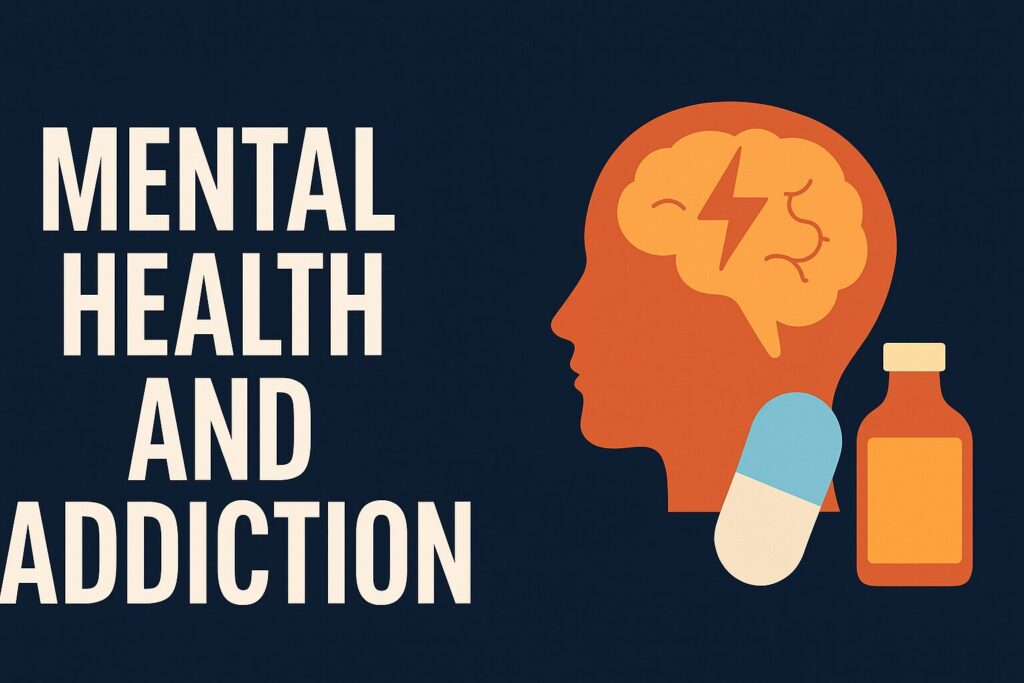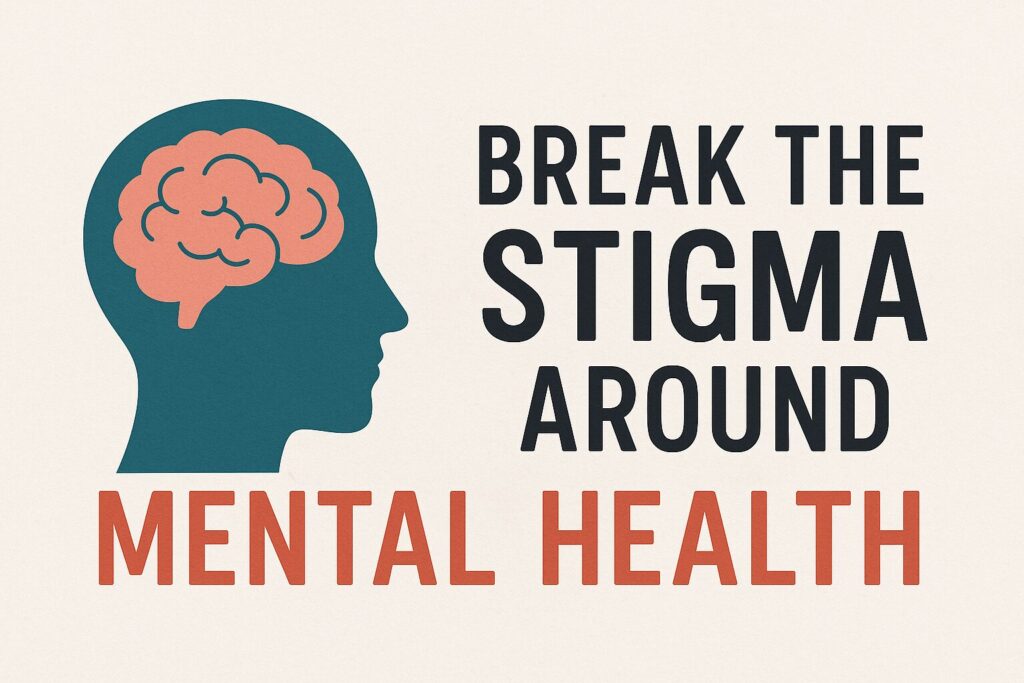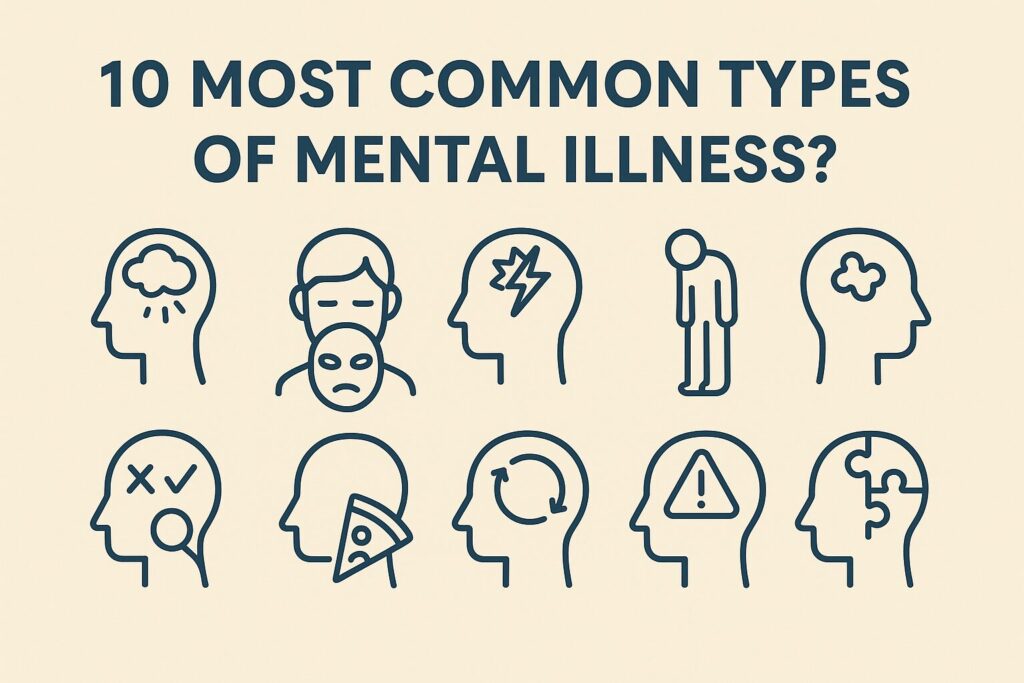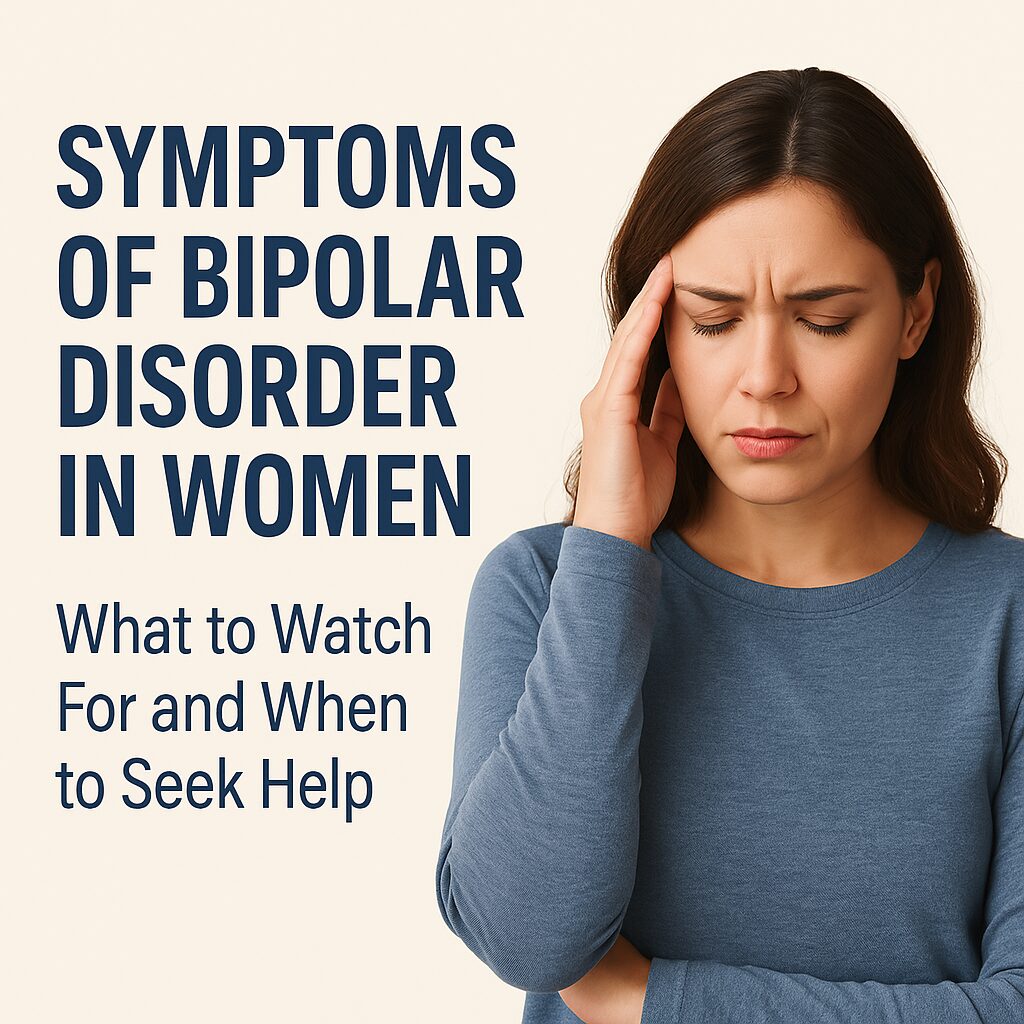
Contents
- 1 Introduction: Understanding the Symptoms of Bipolar Disorder in Women and How to Recognize Them Early
- 2 What Is Bipolar Disorder?
- 3 How Bipolar Disorder Differs in Women
- 4 Common Symptoms of Bipolar Disorder in Women
- 5 Signs of a Manic Episode in Women
- 6 Signs of a Depressive Episode in Women
- 7 Hormonal Triggers and Life Stages
- 8 When to Seek Professional Help
- 9 Treatment and Management Options
- 10 How to Support a Loved One with Bipolar Disorder
- 11 Conclusion
- 12 Final Thoughts
- 13 FAQ: Symptoms of Bipolar Disorder in Women
- 14 References
Introduction: Understanding the Symptoms of Bipolar Disorder in Women and How to Recognize Them Early
Learn the key symptoms of bipolar disorder in women, including emotional highs, depressive episodes, and behavioral changes. Discover early warning signs, when to seek help, and how treatment can improve mental health and stability.
Bipolar disorder is a complex mental health condition that affects both men and women, but the symptoms often appear differently in women.
Hormonal changes, emotional stress, and life transitions can influence how bipolar disorder develops and presents itself.
Many women may go years without realizing that their mood changes are part of something more serious than stress or depression.
Women often describe their emotional highs and lows as overwhelming waves that are difficult to control.
These shifts can disrupt work, relationships, and daily life, and they can lead to confusion, exhaustion, and guilt.
Understanding these symptoms early can help women recognize the signs, seek help, and regain control over their mental health.
In this detailed guide, we will explore every aspect of bipolar disorder in women, from the emotional and behavioral signs to hormonal triggers and treatment options.
We will also discuss how to identify warning signs, how to manage them, and when to reach out for professional help.
What Is Bipolar Disorder?
Bipolar disorder, previously called manic depression, is a chronic mental health condition that causes extreme mood shifts.
These shifts move between emotional highs (mania or hypomania) and emotional lows (depression).
The changes are not just normal ups and downs. They are intense emotional episodes that can affect every part of a person’s life.
The Two Core Phases of Bipolar Disorder
- Manic or Hypomanic Episode:
During this phase, the individual experiences unusually high energy, euphoria, or irritability. Thoughts race, sleep decreases, and impulsive decisions become more likely.- Excessive talking or rapid speech.
- Feeling overly confident or unstoppable.
- Sleeping very little but feeling rested.
- Taking unusual risks or engaging in reckless behavior.
- Racing thoughts that jump quickly from topic to topic.
- Depressive Episode:
This phase brings intense sadness, hopelessness, and loss of interest in daily activities.- Fatigue and lack of motivation.
- Changes in appetite or sleep.
- Trouble concentrating or making decisions.
- Feelings of guilt, shame, or worthlessness.
- Thoughts of death or suicide.
Each episode can last from several days to several months, and women often experience these shifts more frequently than men.
Understanding Bipolar Disorder
How Bipolar Disorder Differs in Women
While men and women both experience bipolar disorder, research shows that women often face unique challenges that influence the way the condition appears.
Key Differences in Women
- More Depressive Episodes
Women experience more depressive episodes than manic ones. These lows are often mistaken for clinical depression, which can delay an accurate diagnosis. - Rapid Cycling
Women are more likely to experience rapid cycling, which means having four or more mood episodes in a single year. Hormones, stress, and certain medications can trigger these cycles. - Hormonal Influence
Hormones like estrogen and progesterone have a strong connection to mood regulation. Fluctuations during menstruation, pregnancy, and menopause can intensify symptoms or trigger new episodes. - Mixed States
Many women experience mixed episodes, where symptoms of mania and depression appear together. For example, feeling hopeless while being restless and unable to sleep. - Coexisting Conditions
Women with bipolar disorder are more likely to have other conditions such as anxiety, thyroid disorders, or post-traumatic stress disorder (PTSD). These can complicate diagnosis and treatment.
Understanding these differences is crucial for accurate assessment and proper management.
Common Symptoms of Bipolar Disorder in Women
Bipolar disorder symptoms can vary depending on the person, but in women, the signs often appear in more emotional and cyclical patterns.
Recognizing these early can lead to better management and faster treatment.
1. Emotional Symptoms
Women often experience strong emotions that fluctuate dramatically. These emotional shifts can feel unpredictable and uncontrollable.
- Intense mood swings that shift from happiness to sadness quickly.
- Overwhelming feelings of guilt, frustration, or euphoria.
- Difficulty maintaining emotional balance during stress.
- Persistent feelings of emptiness or sadness.
- Overreacting emotionally to small events or conflicts.
2. Behavioral Symptoms
Changes in daily behavior often signal that mood patterns are shifting into manic or depressive territory.
- Engaging in impulsive behaviors, such as overspending or risky decisions.
- Withdrawing from friends, family, or social gatherings.
- Losing interest in work or hobbies.
- Changes in sleeping or eating habits.
- Difficulty completing daily responsibilities or maintaining focus.
3. Physical and Cognitive Symptoms
Bipolar disorder also affects the body and thought processes, not just emotions.
- Chronic fatigue or lack of energy during depression.
- Restlessness, fidgeting, or pacing during manic episodes.
- Rapid thinking that makes it hard to concentrate.
- Physical pain without a clear cause, such as headaches or muscle tension.
- Drastic changes in appetite and sleep quality.
Signs of a Manic Episode in Women
A manic episode can be mistaken for high energy or productivity, but it is often disruptive and draining once it passes.
Characteristics of Mania
- Feeling unusually energetic or optimistic for days.
- Having racing thoughts that are hard to control.
- Talking quickly or more than usual.
- Feeling irritable or impatient when slowed down.
- Engaging in impulsive actions such as overspending, gambling, or reckless driving.
- Feeling invincible or having unrealistic goals.
- Needing very little sleep but still feeling alert.
Example Scenario
A woman may start several projects, clean her home all night, or make big financial decisions without planning. She feels powerful and inspired, but once the manic energy fades, exhaustion and regret often follow.
Signs of a Depressive Episode in Women
Depressive episodes are usually longer and more severe in women. These periods can make even simple tasks feel impossible.
Common Symptoms
- Deep sadness that lingers for weeks or months.
- Loss of interest in activities that once brought joy.
- Difficulty waking up or sleeping excessively.
- Feelings of guilt or worthlessness.
- Weight loss or weight gain due to changes in appetite.
- Trouble focusing or remembering things.
- Isolation from friends or family.
- Thoughts of death or suicide, which require immediate professional help.
Emotional Impact
During a depressive episode, everything may feel heavier. Women often describe it as being trapped under a thick emotional fog. They may feel like a burden, even when surrounded by loved ones.
Hormonal Triggers and Life Stages
Hormones play a significant role in how bipolar disorder behaves in women. Each stage of life can bring new challenges and symptom changes.
1. Menstrual Cycle
Hormonal changes during the menstrual cycle can trigger or worsen mood episodes. Many women notice increased irritability, sadness, or anxiety in the days before menstruation.
2. Pregnancy
Pregnancy can either stabilize or intensify symptoms. Some women experience remission, while others develop severe manic or depressive episodes. It is crucial to work closely with a psychiatrist during this time.
3. Postpartum Period
After childbirth, hormonal levels shift rapidly. This period can trigger severe mood episodes known as postpartum bipolar disorder, which includes both mania and depression.
4. Menopause
Fluctuating estrogen levels during menopause may cause mood swings, fatigue, and irritability, potentially triggering new episodes in women with bipolar disorder.
Tracking these patterns through a mood diary can help identify specific triggers and support early intervention.
When to Seek Professional Help
Knowing when to ask for help can be life-changing. Ignoring symptoms or trying to manage them alone can lead to worsening episodes or emotional burnout.
Warning Signs That Indicate You Should Seek Help
- Persistent mood changes lasting more than two weeks.
- Feeling out of control during emotional highs or lows.
- Experiencing thoughts of self-harm or hopelessness.
- Seeing changes in your behavior that others notice before you do.
- Losing interest in activities or struggling to get through daily routines.
Steps to Take
- Reach Out to a Mental Health Professional
Schedule an appointment with a psychiatrist or licensed therapist. They can provide a diagnosis and create a treatment plan. - Keep a Mood Journal
Track sleep, emotions, and stress levels daily. This helps identify patterns and triggers. - Talk to Someone You Trust
Confide in a close friend, family member, or support group. Emotional support is crucial during difficult times. - Seek Immediate Help for Suicidal Thoughts
If you experience thoughts of suicide, call emergency services or a suicide hotline right away. You are not alone, and help is available 24/7.
Treatment and Management Options
Bipolar disorder does not go away, but it can be managed effectively with treatment. Most women achieve stability through a mix of therapy, medication, and healthy lifestyle changes.
1. Medication
Psychiatrists may prescribe:
- Mood stabilizers to balance manic and depressive phases.
- Antidepressants for depressive episodes (used carefully to avoid triggering mania).
- Antipsychotic medications for severe mood disturbances.
Consistency is key. Stopping medication without medical guidance can cause relapse or severe symptoms.
2. Psychotherapy
Therapy helps women understand their thoughts, emotions, and triggers.
- Cognitive Behavioral Therapy (CBT): Helps change negative thinking patterns.
- Interpersonal Therapy (IPT): Focuses on improving communication and relationships.
- Family-Focused Therapy: Teaches family members how to support the individual and manage crises.
3. Lifestyle and Self-Care
Daily routines can make a huge difference in managing symptoms.
- Maintain regular sleep patterns.
- Eat nutritious meals and stay hydrated.
- Exercise regularly to stabilize mood and reduce anxiety.
- Limit alcohol and avoid drugs.
- Practice mindfulness or meditation to calm the mind.
4. Support Systems
Having a reliable support network is essential. Support groups, online communities, and family involvement can help women feel less isolated and more empowered.
How to Support a Loved One with Bipolar Disorder
Family and friends play a crucial role in helping someone manage bipolar disorder.
Ways to Offer Support
- Learn about bipolar disorder to understand what they are going through.
- Encourage treatment and medication compliance.
- Listen with empathy and without judgment.
- Be patient during mood changes.
- Create a stable environment with routines and predictability.
- Celebrate progress, no matter how small.
Even small gestures of compassion can make a big difference.
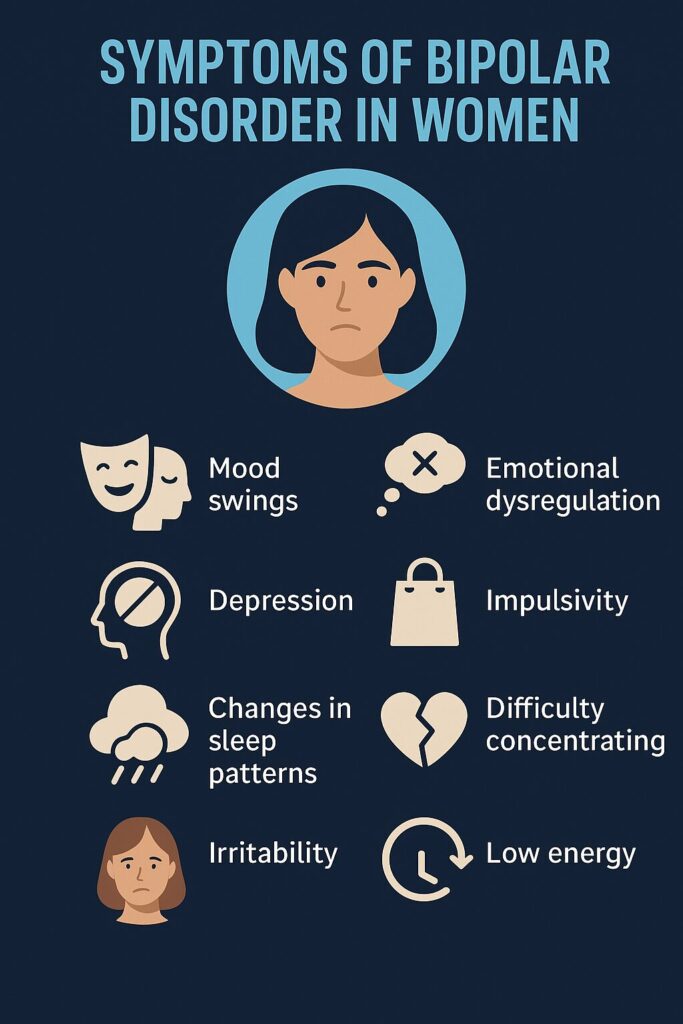
Conclusion
Bipolar disorder in women is often misunderstood, but awareness is growing.
Recognizing the symptoms early allows for proper treatment and improved quality of life.
Every woman’s experience is unique, and understanding how hormonal, emotional, and environmental factors interact can make a powerful difference in management and recovery.
Final Thoughts
If you believe you or someone you love may be experiencing symptoms of bipolar disorder, do not wait to seek help.
Early diagnosis and consistent care can lead to stability and peace of mind.
Remember, mental health conditions do not define you.
With proper treatment, support, and self-awareness, women can lead fulfilling, successful, and joyful lives.
You are not alone, and reaching out is the first step toward healing.
FAQ: Symptoms of Bipolar Disorder in Women
What are the first signs of bipolar disorder in women?
The first signs of bipolar disorder in women often include intense mood swings, periods of extreme energy followed by deep sadness, and changes in sleep or appetite. Many women also experience irritability, racing thoughts, or difficulty concentrating. These symptoms may seem like stress or depression at first but become more noticeable over time as emotional highs and lows repeat.
How do bipolar symptoms differ in women compared to men?
Bipolar symptoms in women tend to include more depressive episodes, emotional sensitivity, and rapid cycling, where mood shifts occur more frequently. Hormonal changes during menstruation, pregnancy, or menopause can also intensify symptoms. Women are also more likely to experience mixed episodes, where depression and mania occur at the same time.
Can hormones make bipolar symptoms worse in women?
Yes, hormonal fluctuations can significantly influence mood stability in women with bipolar disorder. Estrogen and progesterone affect brain chemicals linked to mood regulation. Changes during menstrual cycles, pregnancy, postpartum recovery, and menopause can trigger or worsen symptoms of mania and depression.
What triggers bipolar episodes in women?
Common triggers include stress, lack of sleep, major life changes, hormonal shifts, and stopping medication without guidance. Substance use and seasonal changes can also trigger mood episodes. Recognizing personal triggers and maintaining a stable daily routine can help prevent relapse.
How is bipolar disorder diagnosed in women?
Bipolar disorder is diagnosed through a comprehensive mental health evaluation that includes a detailed discussion of symptoms, family history, and medical background. A psychiatrist may use mood tracking, psychological assessments, and physical exams to rule out other conditions before confirming a diagnosis.
Can bipolar disorder be managed successfully in women?
Yes, with the right treatment, women with bipolar disorder can live stable and fulfilling lives. Effective management usually includes a combination of medication, therapy, lifestyle changes, and support from loved ones. Consistency with treatment and open communication with healthcare providers are key to long-term stability.
When should a woman seek help for bipolar symptoms?
A woman should seek help when mood changes interfere with daily life, work, or relationships. If she experiences extreme highs or deep lows that last for more than two weeks, or if thoughts of self-harm appear, immediate professional help is needed. Early treatment improves outcomes and prevents symptoms from worsening.
Can bipolar disorder worsen without treatment?
Yes, untreated bipolar disorder can worsen over time. Without proper care, mood episodes may become more frequent and severe. It can also lead to relationship difficulties, financial problems, and increased risk of self-harm. Seeking early treatment helps manage symptoms effectively and improves overall quality of life.
Is bipolar disorder hereditary in women?
Genetics play a role in bipolar disorder. If a close family member has the condition, the risk increases. However, genetics alone do not cause bipolar disorder. Environmental factors, stress, and hormonal changes also contribute to its development in women.
Can lifestyle changes help control bipolar symptoms in women?
Yes, healthy lifestyle habits are an important part of managing bipolar disorder. Regular sleep, balanced meals, daily exercise, and mindfulness practices can reduce stress and stabilize mood. Avoiding alcohol, drugs, and major sleep disruptions also helps minimize mood swings.
References
- National Institute of Mental Health (NIMH) https://www.nimh.nih.gov/health/topics/bipolar-disorder
- Mayo Clinic https://www.mayoclinic.org/diseases-conditions/bipolar-disorder/symptoms-causes/syc-20355955
